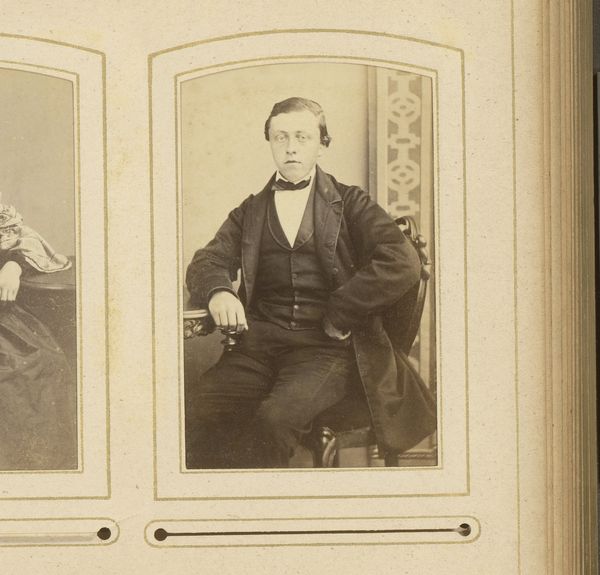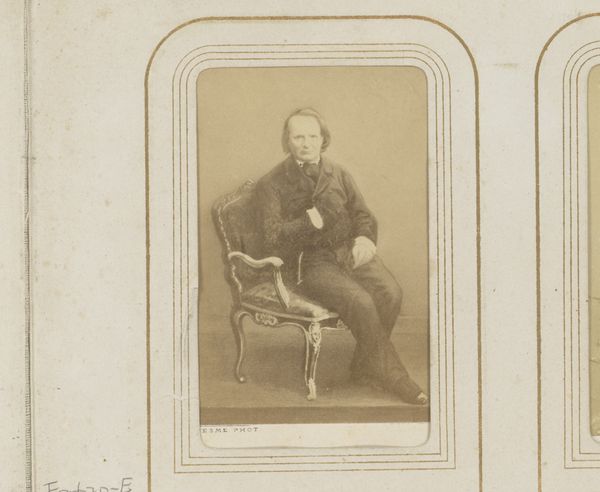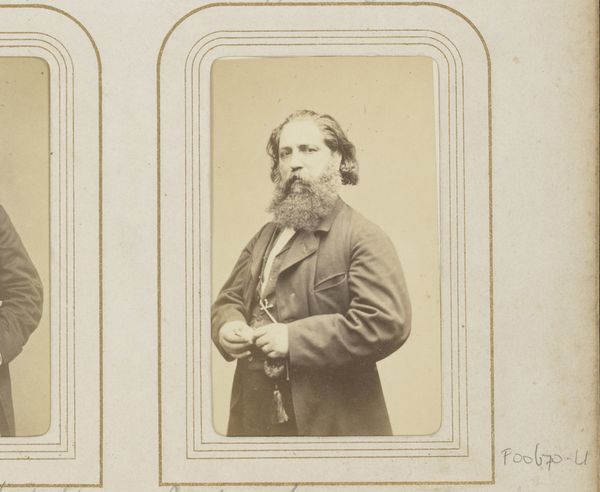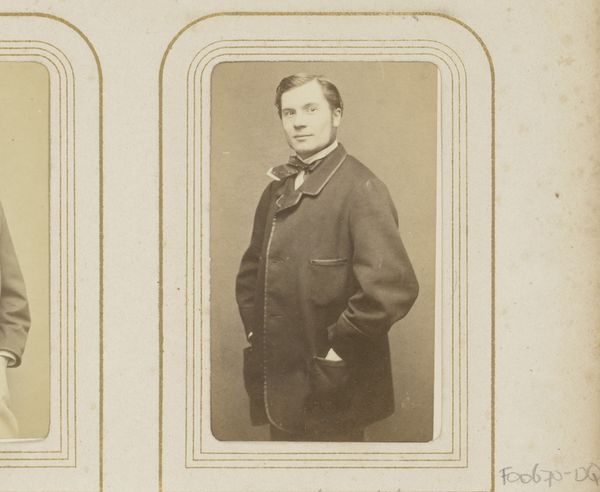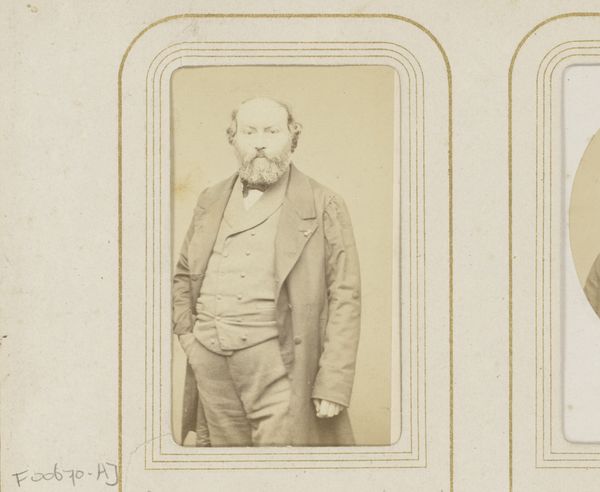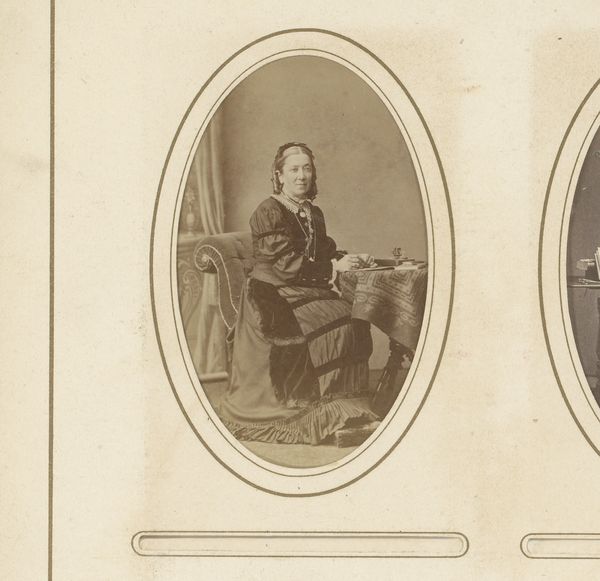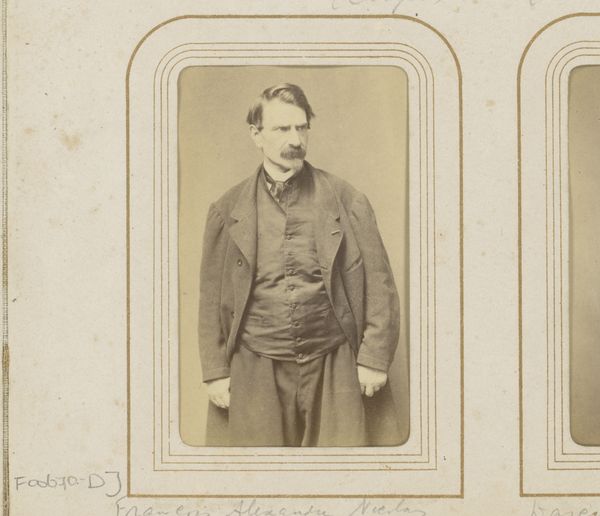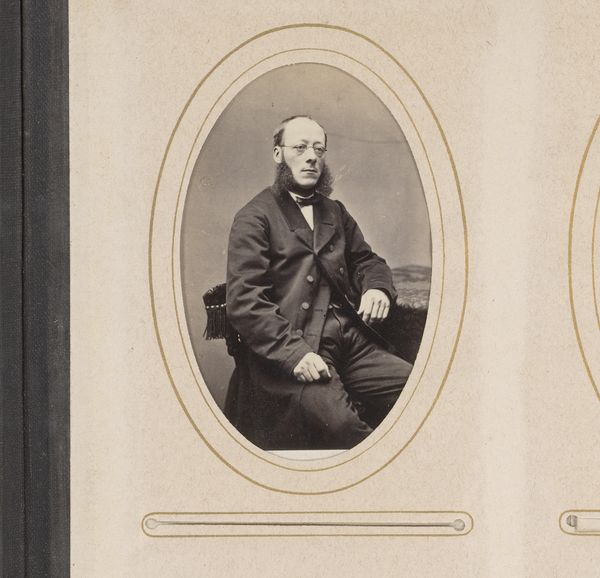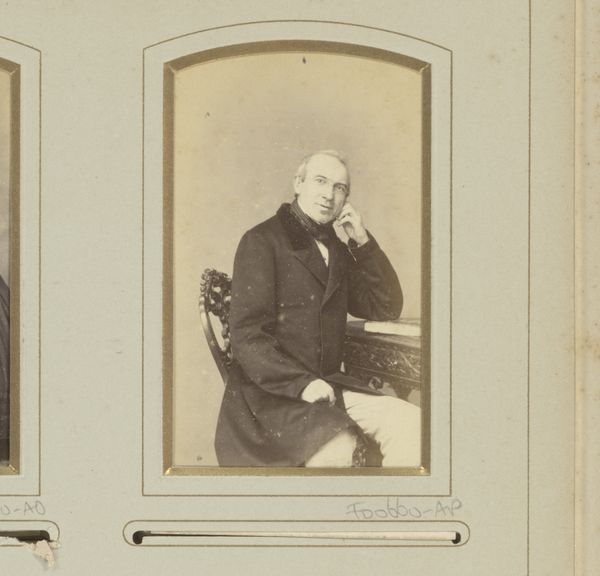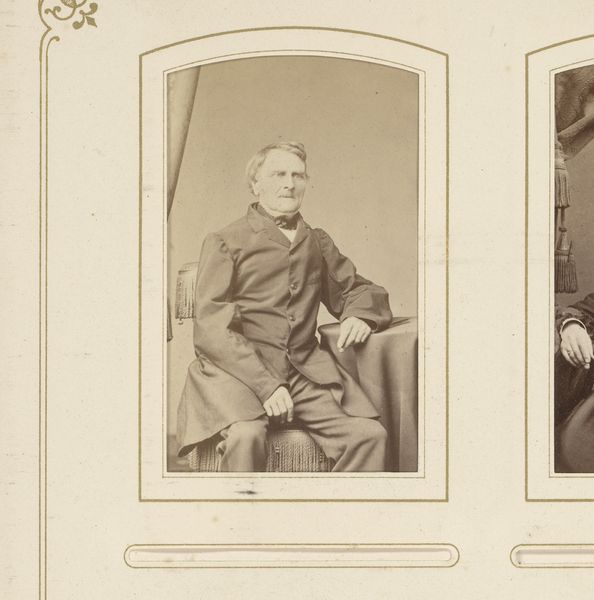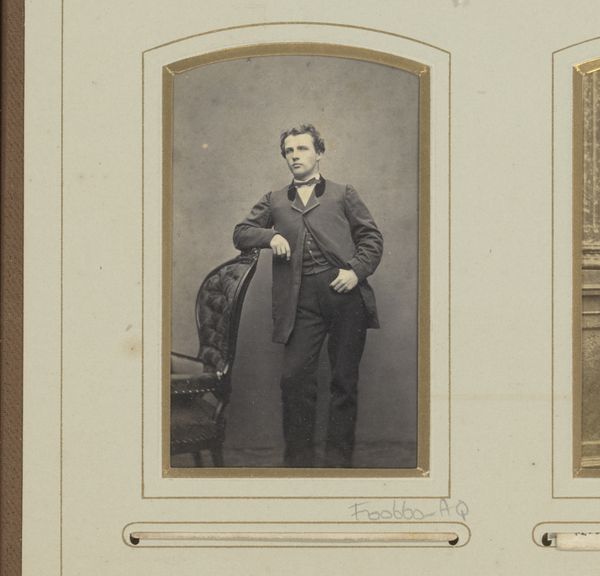
photography
#
portrait
#
photography
#
historical photography
#
19th century
Dimensions: height 84 mm, width 51 mm
Copyright: Rijks Museum: Open Domain
Curator: Here we have a photographic portrait of Gioacchino Antonio Rossini, dating from between 1855 and 1868, and held in the collection of the Rijksmuseum. Editor: There's something profoundly melancholic about it, isn't there? The soft sepia tones, the way he's positioned almost receding into the background... The textures, especially the faint detailing on his coat and the blurred textures on the patterned paper, convey the atmosphere of the old photograph. Curator: Sepia tones lend that certain nostalgic aura to 19th-century portraits. He’s holding a cane, gazing away as if reflecting. He has these pince-nez hanging down, not like someone trying to project authority or dominance. Instead, it conveys intellectual and artistic depth. Editor: The materiality of that cane tells a lot. A mass-produced item indicating a certain class, of course, but think of the woodworking involved, the access to specific timber… even the polish indicates social status. And who produced such things and under what conditions? Curator: Fascinating questions to ask of a simple photograph! Rossini himself, celebrated in his time, could be seen as an icon of genius, and this portrait freezes a moment to offer future viewers a tangible, lasting connection with a composer. He becomes mythologized. Editor: And I return to that somber, soft tone... Photography was emerging into a full-blown industry at this time. Consider all the labor needed to make this one small portrait. The processing of the photograph involved many hands, from preparation to printing; it's a material record, in and of itself. Curator: Exactly, the image gains significance, through multiple dimensions. Thank you. It has broadened my awareness when observing photography as historical documentation and the process behind the image, in addition to its symbolism and emotional resonance. Editor: Agreed. Thinking about the photographic means helps reveal those often obscured relationships and materials that produce such iconic portraits, shifting perspective and emphasizing its value in cultural study.
Comments
No comments
Be the first to comment and join the conversation on the ultimate creative platform.

